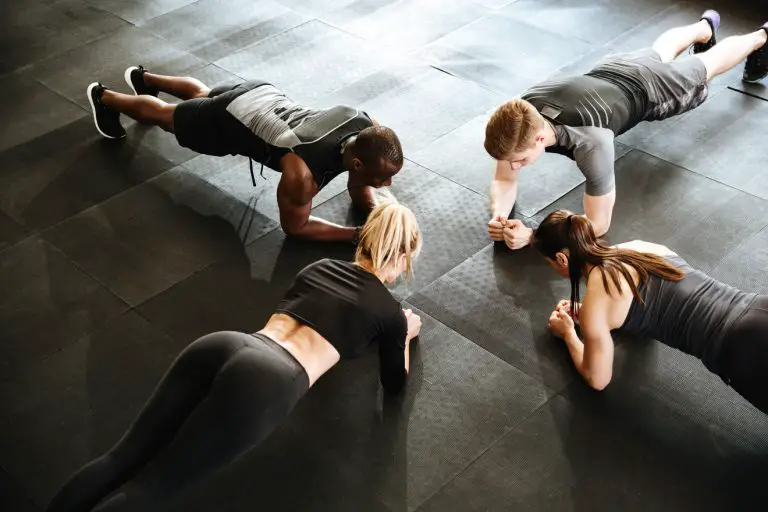Ways to get stronger other than lifting heavy weights
Building strength beyond heavier weights
When it comes to building strength, the conventional approach often revolves around lifting heavier weights. However, increasing the weight on your barbell or dumbbells isn’t the only way to get stronger. In fact, relying too heavily on lifting progressively heavier loads can lead to plateaus, injuries, and overtraining. Fortunately, there are several alternative strength-building techniques that can help you gain strength without the need to continuously add more weight. These methods not only help you break through plateaus but also promote functional strength, mobility, and injury prevention.
This article explores effective strategies for getting stronger without lifting heavier, providing insights into techniques that can complement your training routine and push your strength to new heights.
Time under tension (TUT)
One of the most effective ways to build strength without increasing the weight is to manipulate the time your muscles spend under tension during each repetition. This technique, known as time under tension (TUT), focuses on the tempo of your movements rather than the weight you’re lifting. By slowing down both the eccentric (lowering) and concentric (lifting) phases of an exercise, you increase the amount of time your muscles are under load, stimulating growth and strength.
For example, instead of performing a bench press or squat with a fast, explosive motion, you can increase the time it takes to complete each rep by lowering the weight more slowly (e.g., 3–4 seconds) and then pushing up at a controlled pace. This controlled tempo not only increases muscle engagement but also forces the muscles to work harder during each rep, increasing the intensity of your workout without needing to add more weight.
By focusing on TUT, you challenge your muscles in new ways, which can lead to strength gains as well as improved muscle endurance. This method works well for a variety of exercises, including bodyweight movements, free weights, and machines.
Unilateral training
Another strategy for building strength without heavier weights is to incorporate unilateral training, which involves working one side of the body at a time. Exercises like single-leg squats, lunges, and single-arm presses can improve muscle imbalances, promote better coordination, and build strength in a more balanced way.
Unilateral exercises force your muscles to stabilize your body and engage more muscles than they would during bilateral (two-sided) movements. For example, a single-leg squat requires more stabilization in the core and lower body muscles compared to a regular squat, where both legs are working together to support the weight. By focusing on unilateral movements, you can build strength in specific muscle groups while improving overall stability and mobility.
Additionally, unilateral training allows you to target weak points that may be holding back your overall strength progress. Often, one side of the body is stronger than the other, and unilateral training can correct these imbalances, leading to better overall performance and reduced risk of injury.
Isometric holds
Isometric exercises, which involve holding a position for an extended period of time without moving, are another excellent method for building strength without increasing weight. These static holds place continuous tension on the muscles, improving endurance and muscle density while targeting different muscle fibers than dynamic movements.
Planks, wall sits, and isometric lunges are examples of exercises that rely on isometric contractions. For example, during a plank, your core muscles work isometrically to hold the position, increasing their strength and endurance over time. Similarly, holding a squat or push-up position challenges your muscles in a way that increases muscle endurance and promotes strength without having to add additional weight.
Isometric training is also particularly beneficial for improving joint stability and supporting injury prevention. By focusing on holding a position for a set amount of time, you’re training your muscles to remain engaged and stable, which translates into better control and more effective movement patterns in dynamic exercises.
Progressive range of motion
While lifting heavier weights is commonly associated with building strength, another way to get stronger without adding more weight is by increasing your range of motion (ROM). A greater range of motion forces the muscles to engage more fully during an exercise, which leads to improved strength and muscle development.
For example, performing squats with a deeper range of motion (assisted squats, for instance) will require greater activation of the glutes, hamstrings, and quadriceps than a standard squat that only goes to parallel. Similarly, performing push-ups with your chest touching the ground or performing dips with a deeper range can target your chest and triceps more effectively.
By increasing your ROM, you’re forcing the muscles to work harder through a fuller stretch and contraction, which can stimulate muscle growth and increase strength, all without increasing the load you’re lifting. Progressive ROM is especially effective for targeting muscle groups that may not be fully engaged in a standard range of motion.
Bodyweight training
Bodyweight exercises are a great way to build strength without the need for external weights. By using your body as the resistance, exercises such as push-ups, pull-ups, dips, planks, and variations of squats can be incredibly effective at building functional strength. The key is to progress with variations that increase the difficulty and challenge your muscles in new ways.
For example, as you get stronger, you can progress from standard push-ups to more challenging variations like decline push-ups or handstand push-ups, both of which increase the intensity without requiring heavier weights. Similarly, pull-ups can be made more challenging by adding pauses at the top of the movement or slowing down the descent.
Bodyweight exercises allow for a high degree of variability, with countless progressions and regressions to match any fitness level. This versatility makes bodyweight training an effective method for building strength, improving muscle endurance, and increasing mobility.
Plyometric training
Plyometric training, often associated with jumping and explosive movements, can also contribute to strength-building without the use of heavier weights. These exercises focus on developing power by rapidly stretching and contracting the muscles, which stimulates strength development.
Jump squats, box jumps, clap push-ups, and burpees are examples of plyometric exercises that can enhance strength, agility, and power. Plyometrics help train the fast-twitch muscle fibers, which are responsible for explosive strength and athletic performance. By increasing the intensity of your workouts with plyometrics, you can build strength without adding weight to your routine.
Plyometrics also help improve neuromuscular coordination, which can lead to better movement patterns, more efficient muscle recruitment, and increased strength. They are particularly useful for athletes looking to develop explosive power in addition to raw strength.
Strength through variety
Getting stronger without lifting heavier weights is possible by incorporating alternative training techniques. By utilizing strategies such as time under tension, unilateral training, isometric holds, increasing your range of motion, bodyweight exercises, and plyometric movements, you can continue to progress without the risk of overtraining or injury from constantly adding more weight. These methods help challenge your muscles in new ways, promoting functional strength and long-term progress.
Ultimately, the key to strength-building without lifting heavier lies in variety and progression. By exploring these alternatives and integrating them into your routine, you can continue to break through plateaus, prevent boredom, and achieve sustainable strength gains while maintaining a balanced and safe approach to training.
Written with the assistance of AI. Reviewed and edited by Marielle Livelo.







